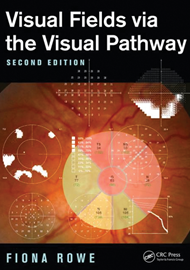This book is a very well-written and comprehensive text on visual field assessment and interpretation. It includes a large number of illustrations which are of a high quality and make it a good reading experience.
The first section of the book discusses the fundamentals of the perimetric tests and statistical analysis of the results of field assessment. The initial chapters provide an elaborate description of different types of machines available and various testing strategies. Recent advances in perimetric assessment have been included.
Discussion on practical aspects of setting up a test and choosing the right testing strategy are useful for the perimetric practitioner, who should be able to tailor an appropriate test for the patient. Beneficial to beginners, is a thorough summary of how the data is presented on a field test print out and the interpretation of this. Reliability indices, global indices, probability plots and further in-depth statistical analysis to determine progression, e.g. change analysis, overview analysis etc., are explained.
As the book progresses to the second section, the discussion leads on to field defects in the different parts of ascending visual pathway, their corresponding anatomy and pathologies. This format makes it easy for the reader to clinically correlate the context of the field defects being discussed.
Several pathologies affecting each level of the visual pathway are enumerated, along with a succinct account of their clinical presentation. The clinical photographs, optical coherence tomography (OCT) images and radiographic images supplementing the text are helpful in giving the reader a comprehensive account of the clinical conditions. The corresponding field defects are depicted by illustrations of visual field assessment. Most of these are Humphreys visual field assessments as this is the most commonly used field analysis. There are some inclusions of Octopus and Goldmann perimetric analysis.
Brief notes on visual standards for safe driving, guidelines from the Driving Vehicle Licensing Agency (DVLA), artefacts in tests and errors of interpretation are relevant for daily practice.
The author’s approach to this subject is very organised throughout all the chapters and the content is detailed. The large number of illustrations and their accompanying legends are the strongest parts of the book and by themselves can provide a quick read.





